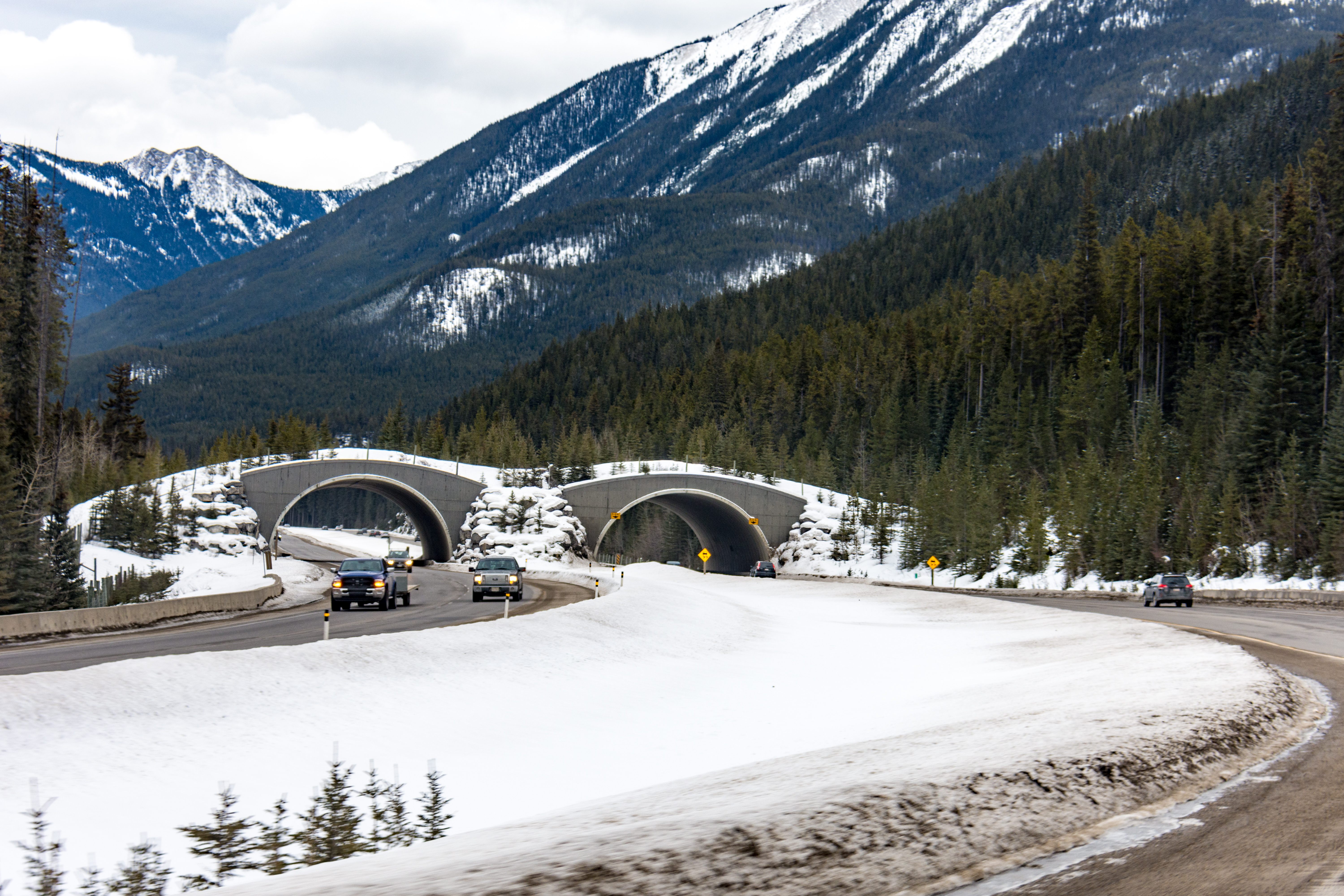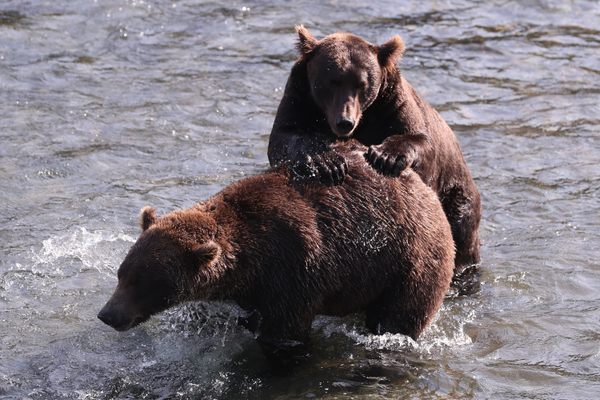How Did the Grizzly Bear Cross the Road?
And how can we help them do it safely?

In 1997, Adam Ford, a researcher in wildlife restoration ecology at the University of British Columbia, and his collaborators had a query that sounds like the beginning of a child’s joke: How do animals cross the road?
It’s an important question, because animals are chronic jaywalkers. When humans lay down highways through once-wild habitats, stomping grounds get fragmented and animals might be marooned in a place that doesn’t have everything they need in food, water, or mates. They may have to rove for better options—especially if droughts or storms ravage the surrounding landscape. Crossing busy roads, of course, leaves animals vulnerable to deadly, high-speed collisions. Species that are large or sluggish or both are at particular risk, as are the ones that need to go back and forth a lot.
Grizzlies are huge, they amble, and many, many of them lope across the Trans-Canada Highway, a four-lane artery that takes drivers 50 miles through Banff National Park. The park has installed plenty of ways to help animals get around without mingling so dangerously with cars. There are 38 underpasses and six overpasses, and grizzlies, wolves, coyotes, moose, elk, and other large mammals have used them more than 150,000 times since 2012, according to park officials. Parks Canada concludes that the crossings and other security measures have reduced collisions by 80 percent, and also that they help the population mingle, and therefore stay genetically diverse. In a 2014 study, researchers used barbed wire to (gently) snag hair samples from wandering bears, and DNA analysis revealed that black bears and grizzlies that cross the road tend to mate with ones on the other side.

Animal infrastructure like this is obviously useful, but it’s expensive to install—an overpass might run as much as $4 million (though an underpass is just a fraction of that). Perhaps more importantly, it can be tricky to get animals to use them. For “wary animals like grizzly bears and wolves, it may take up to five years before they feel secure using newly built crossings,” Parks Canada writes. In an effort to understand where and how the grizzlies got from one side of the road to the other, Ford and company spent 17 years tracking them. The research, newly published in the Wildlife Society Bulletin, throws a heap of data behind the question of which crossings are the most effective.
Ford and his collaborators started off monitoring 23 sites. They stopped by every few days to look for footprints in specially placed track-pads or swaths of sandy-loam soil. As new structures went up over the years, the researchers threw more high-tech surveillance into their effort. By 2008, they had installed cameras at 44 sites spanning a 60-mile stretch of the highway. The crossings include overpasses, open-span bridges, and three types of underground culverts (small concrete ones, and both small and large metal ones, all of which look something like subway tunnels for quadrupeds).
This long view is critical because grizzlies are slow to reproduce, and researchers needed to look for a long time to gauge whether family units changed parents’ behavior. Does having cubs make adults behave differently?
It seems to. Single male bears traipsed through the culverts, but family groups were vastly more likely to choose the overpasses. While box culverts are significantly cheaper than overpasses, the researchers write, for the sake of long-term population health, the structures need to be diverse. “A highway with crossing structures that do not address the behavioral patterns of family groups is equivalent in function to a highway without crossing structures altogether,” they write.
Sometimes it is important to have the option to take the scenic route.






















Follow us on Twitter to get the latest on the world's hidden wonders.
Like us on Facebook to get the latest on the world's hidden wonders.
Follow us on Twitter Like us on Facebook